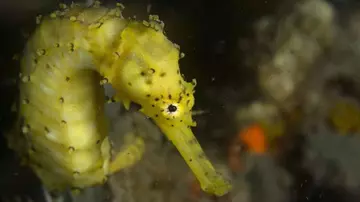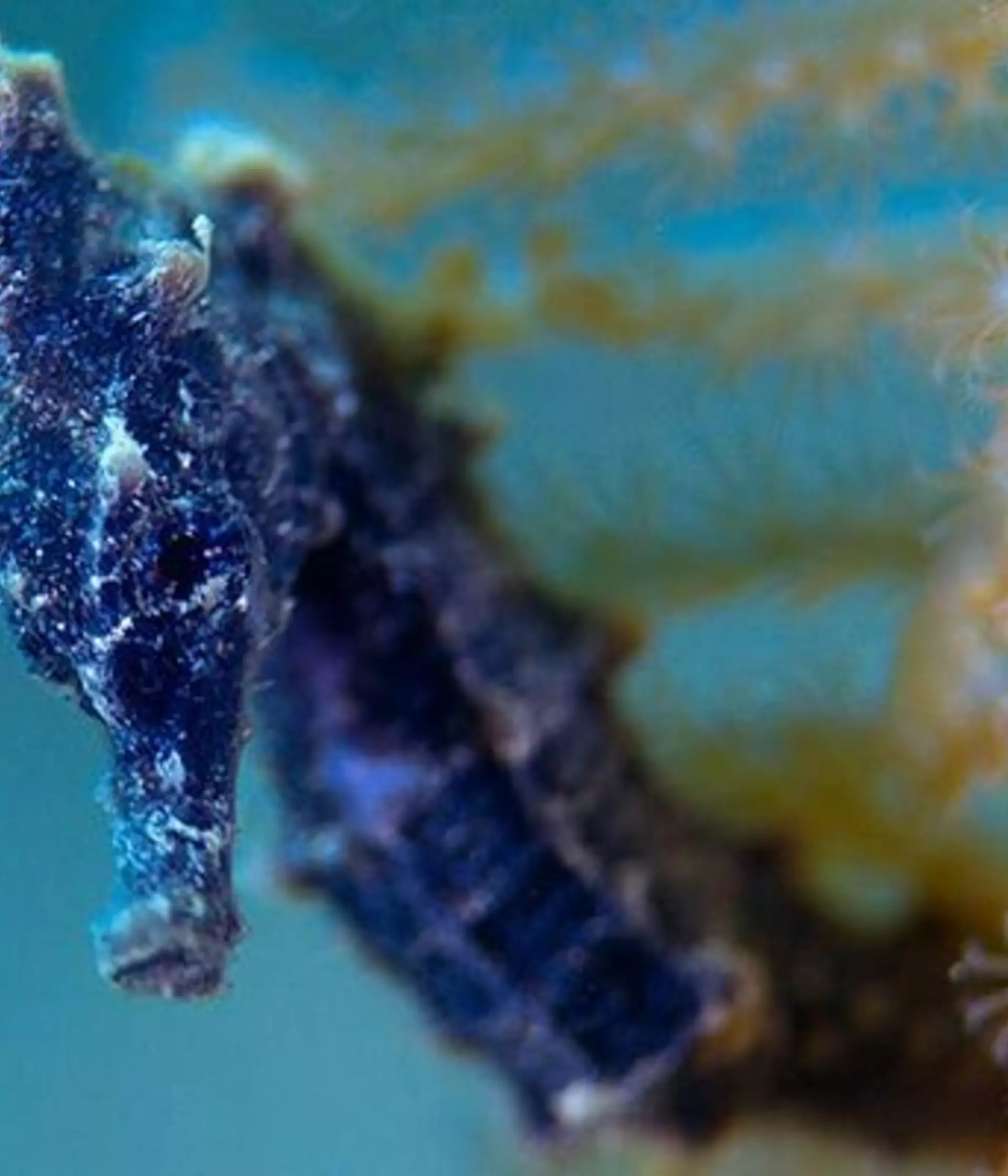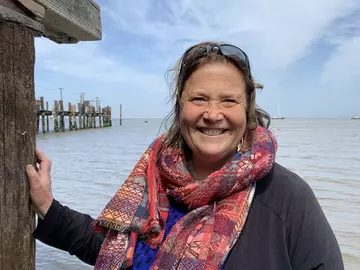
Professor Heather Koldewey
Lead, Bertarelli Foundation's Marine Science Programme
Charity (Chai) Apale
Program Lead - ZSL Philippines
ZSL’s Dr Heather Koldewey and Dr Amanda Vincent founded Project Seahorse in 1996 to combat threats to seahorses across the globe.These unusual fish are vulnerable to over exploitation for traditional medicine, tourism trade and many types of fishing. Our surveys and research provide a scientific basis for changing regulations on seahorse harvesting and trade, and for setting up marine protected areas to safeguard seahorse habitat.
Why seahorses need protection
Seahorses, charismatic symbols of marine ecosystems, face significant threats. Each year, trawlers and fishers remove millions of these creatures from their natural habitats, which are further endangered by pollution and destruction. As flagship species, seahorses are emblematic of the seagrasses, mangroves, coral reefs, estuaries, and seaweeds they inhabit. They play a crucial role as predators in these ecosystems and are also valuable resources for humans.
Key Achievements and Goals
Project Seahorse was co-founded by ZSL in 1996 to combat these global threats, and has since worked tirelessly to conserve and achieve the sustainable use of seahorses around the globe. By focusing on the protection of seahorses and their habitats, we are also working to ensure marine ecosystems are healthy and well-managed.
Seahorse Science and Conservation
- Our scientists were the first to study seahorses underwater, generating the very first estimates of seahorse growth and survival rates in the wild and making the discovery that many species form long-term monogamous pairs. We produced the first seahorse identification guide (1999), which has become the core reference for seahorse conservation and management action.
- We completed the first synthesis and analysis of seahorse life history (2004), the first global review of seahorse aquaculture (2010) and a comprehensive review of the conservation and management of seahorses and other Syngnathidae (2011). We went from being a few biologists to becoming the IUCN Seahorse, Pipefish and Seadragon Specialist Group.
Establishing Protected Areas
- We generated community-managed marine protected areas — 35 and counting since 1995 – in collaboration with local communities, and then help them to do their job well. We develop marine resource management tools that are used by governments, conservation groups, and other scientists all over the world.
- Project Seahorse helped pioneer 'frugal' conservation — highly time-efficient, cost-effective methods of tracking changes in habitats and fish populations — and we have shown through our research that MPAs established quickly using local knowledge can be as or more effective than those set up using a slower, more rigorous scientific approach.

Limiting Problem Fisheries
- We began by collaborating with small-scale fishers who collect wild seahorses by hand. We then realized that the biggest threat to seahorses comes from bottom trawling. This indiscriminate gear catches thousands of species and destroys marine habitats, while also posing huge social and economic problems.
- We are now producing the research and making the connections that will help end bottom trawling, in favour of selective fisheries.
Regulating Wildlife Trade
- We pioneered the world’s first analyses of the damaging effects of harvesting seahorses, guiding a landmark agreement to regulate international seahorse trade under Appendix II of CITES (2002), a first for marine fishes. Our work with seahorses has repeatedly set precedent for marine fish species across CITES implementation and remedial processes. Notably, we developed the first framework for countries to assess exports of marine fishes for sustainability, called making non-detriment findings. We also supported the first Review of Significant Trade for marine fishes, which asks countries to justify their exports of seahorses as sustainable, and drafted the first Recommendations to help countries meet their obligations for any marine fishes. Recently we consolidated resources into a toolkit to help support CITES member countries.
- We continue to lead on seahorse issues at CITES, particularly in identifying and addressing illegal trade. Another key focus is the live (aquarium) trade in seahorses and how it has changed under CITES. We also led a study on CITES implementation of Appendix listings for marine fishes in general.
- We also led development of the first conservation breeding for seahorses in public aquariums to address the live trade in seahorses and help make that trade sustainable. We have established a partnership with Hong Kong Traditional Chinese Medicine Merchants Association in Hong Kong (since 2003) to ensure that marine species are used sustainably in traditional medicine.
Amplifying Our Efforts Through Training and Outreach
- We have mounted exhibits that have reached more than 10 million visitors to public aquariums, and Project Seahorse has trained more than 200 professional conservationists around the world.
- Furthermore, Project Seahorse has created a pioneering community science program, iSeahorse (2013) that invites everyone to contribute to seahorse science and conservation. To date, we have amassed 11,000+ observations from more than 2000 individual contributors. Such community knowledge is of great value for conservation and management of the world’s 46 seahorse species. For example, 15% of verified observations are outside the previously known range of the species. For another, iSeahorse observations data have already prompted creation of one new marine protected area (MPA) in the village of Anda, Bohol, Philippines, and expansion of another MPA.
Awards
Project Seahorse’s work saving seahorses and marine habitats has been recognised with many international awards and honours, including the first ever Whitley Award in Animal Conservation in 1994. Project Seahorse director Dr. Amanda Vincent was the Indianapolis Prize in Animal Conservation in 2020; see more here.

Get involved
Project Seahorse depends on the support of our partners and dedicated individuals to carry out its vital work. With your help, we’ll continue making a difference for seahorses and marine conservation everywhere.
Find out how you can get involved to help seahorses worldwide

